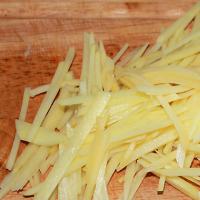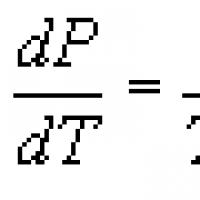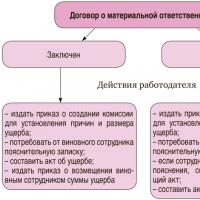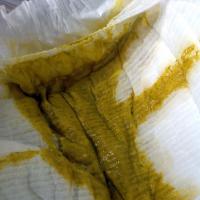Templates for crafts made from plywood. What can be made from plywood with a jigsaw. Scope and installation features. Simple and mechanical plywood crafts. Coffee table by Jeffrey Matthias
Plywood – universal material, which is usually used in furniture production and private construction.
With a little skill and creative imagination, using this building material you can make children's toys, decorative crafts For personal plot, small household items. It is noteworthy that this does not require special skills or knowledge.
Let's see what interesting plywood products you can make with your own hands, having a little free time and patience.
Why plywood
The choice in favor of plywood was not made by chance. Unlike simple wood, this material has the following advantages:
- strength . The structure of the sheet is multilayer, which provides a certain rigidity and resistance to deformation;
- availability . Available in any hardware store and sold in an affordable price segment;
- ease of processing. Cutting crafts does not always require a power tool; you can get by with an ordinary jigsaw;
- safety . The material is environmentally friendly, so you can even make toys from it without fear that your child will develop an allergy.
Plywood initially has a smooth surface, so it does not need additional.
Products are divided into grades, which differ not only in cost, but also in quality. For crafts, they usually use sheets of the 1st and 2nd grades, which do not have veneer delamination, chips and other defects. If the decorative decoration is intended to be used in the garden, it makes sense to give preference to moisture-resistant plywood.
Figurines for the garden
DIY plywood crafts for the garden are the most practical and inexpensive way decorate your garden plot. Here you can fully realize your creative potential by making your garden or flower bed more original and interesting.
Select a template
The key feature of plywood is its versatility. From a flat sheet you can cut out almost any figure using a template. A cat climbing over a fence at the dacha, holding a piece of sausage in its teeth; a curious man watching his neighbors through binoculars; a herd of reindeer grazing in a flowerbed. There are a lot of options, and crafts can be flat or voluminous.
It is better for inexperienced craftsmen to start with simple flat figures, which are made in 1.5-2 hours, maximum in a day.
As a sketch, you can use the ideas of other masters, look at the design options for your personal plot on the Internet, or create your own funny drawing. It is better to draw the template on tracing paper or graph paper, and then carefully transfer it to the plane of the plywood sheet. A good option is to create an image in Microsoft Power Point.
You can make a high-quality sketch for a plywood craft using this application according to the following scheme:
- transfer your favorite drawing to the working window of the program;
- go to the scaling section and set the aspect ratio based on the size of the existing sheet of plywood;
- break the finished drawing into fragments;
- print them one by one on the printer.
After this, the individual fragments of the picture are glued into one sheet, the template is carefully cut out along the contour, applied to the plywood and traced with a simple pencil. This operation takes no more than half an hour, but this technique allows you to create effective templates, even without artistic abilities.
Manufacturing technology
After drawing the sketch on a plywood sheet, the figure needs to be cut out.
For thin sheets of plywood, a regular jigsaw is suitable; thicker material can be cut faster with an electric tool.
The cut should not be made strictly along the contour, but leaving a margin of about 1 millimeter. This is a common precaution so that the canvas does not accidentally move to the side and ruin the template. If the decorative decoration involves through cuts, the starting groove is drilled with a drill, after which a jigsaw file is passed through the resulting hole.
After completion of the work, the remaining irregularities are removed with a fine file or sandpaper.
Finishing
Of course, even the most original figurine requires at least painting to become brighter and more interesting.
Before applying the design, the entire surface that is supposed to be painted must be treated with fine-grained sandpaper, making the plywood a little rough. This will ensure better adhesion of wood to paint and varnish materials. Then you need to remove any wood dust remaining after treatment and degrease the surface with a solvent.
If the template is multi-colored, it is recommended to mark the demarcation lines with masking tape. It is better to paint fragments of such crafts separately to avoid accidental mixing of colors.
The paint is applied in multiple layers, with each subsequent layer applied only after the previous one has completely dried. This painting scheme will make the design more durable: the paint will not fade in the sun or peel off after rain.
At the final stage, the finished surface can be varnished to make the figure more resistant to impact. environment. The varnish is applied according to a similar scheme: a multi-layer texture with the obligatory drying of each layer.
Note! If the figurines are removed from the garden in winter, the paint will have to be renewed approximately once every 3-4 years.
To increase the moisture resistance of the pattern, it is recommended to choose acrylic paints for external use. Materials for facade works more resistant to ultraviolet radiation and moisture, reliably protect the tree.
Volumetric figures made of plywood
You can easily make beautiful, three-dimensional crafts in 3D format with your own hands. In general, such products are manufactured similarly to the scheme given above. The only caveat: the figure will consist of several elements.
For example, if we are talking about a rooster, which will serve as a good decorative decoration for the lawn, then the three-dimensional figurine will consist of the following parts:
- body, including head and tail;
- two wings: one on each side;
- a pair of paws.
Each element is cut out separately according to the drawn up sketch. After which the figure is assembled into a single whole using glue or decorative nails. Using a similar scheme, you can make any animal (cat, dog, bear), mushroom, gnome, lantern and much more. Souvenirs are also cut out small sizes, which are installed on a shelf.
Children's toys made of plywood
Almost any children's toy can be made from plywood. For the little ones, pyramids or mobiles that hang above the baby’s crib are suitable. For example, you can make a pendant of multi-colored stars, which are attached to a fishing line and rotate slowly, evoking pleasant dreams.
For older children, various cars, tanks, airplanes, and puzzles are suitable. It is noteworthy that you can involve a child in the creation of each toy, which will not only allow you to have fun, but also teach the boy how to use the instrument.
Girls will not be left out either. You can cut it out of plywood Dollhouse and make all the interior furnishings: beds, chairs, dishes. The appearance of crafts for children made from plywood is much more interesting than that of factory toys, because they are made with soul. They can be given for a birthday, and it will be a very unusual and pleasant gift.
Such compositions do not contain toxic substances, therefore, they will not create health problems, even if the child puts the toy he likes into his mouth.
Setting up the kitchen
Taking into account the specifics of the application, kitchen crafts are made from dense, water-resistant plywood.
This material is not afraid of moisture and steam, so it can last for several years. Carved shelves, boxes for storing spices and other necessary small items are usually made from plywood. cutting boards, hooks for potholders, souvenir refrigerator magnets.
If you have some experience, you can assemble a whole kitchen set, which will not differ from the products of furniture factories. To do this, use thick sheets of plywood, a jigsaw or a hacksaw. And of course, you need to have some free time and desire.
The work of a designer in a broad sense implies that a person has a developed imagination, the ability to generate creative ideas and embody them in the form of objects that have a completely utilitarian purpose. Ease of processing, the ability to create amazing things from affordable and inexpensive material have elevated plywood to the rank of favorites among many modern fashionable furniture and interior design makers.
You can make any thing from plywood: furniture, boxes, decorations, whatever you have enough imagination and carpentry skills for.
You can make almost anything you want from plywood with your own hands. Even the hulls of small boats are made from moisture-resistant varieties. Plywood trimmed with plastic or expensive wood veneer is used in interiors both as a finishing touch and for making furniture. Durable and cheap, environmentally friendly material is also suitable for making children's toys, design solutions in the design of the garden, boxes for storing food and various small items.
Manufacturing technology

Types of plywood boxes and methods of joining walls.
In order for a product to serve for a long time and look quite attractive, you need to know the rules for processing the material from which it will be made. Unlike solid wood, plywood is thin sheets of veneer glued together so that the grain of one layer is perpendicular to the direction of the grain of the other.
- This allows sheets to be bent in any direction, creating complex shapes. But when sawing across the fibers of the top layer, there is a possibility of damaging it. Therefore, when working with plywood you need to follow a few simple rules:
- to prevent cracking of the surface when cutting across the grain, you must first make an incision with a knife along the cut line;
- Before driving nails or screwing in self-tapping screws, you should drill holes for them;
- washers must be placed under the caps of fasteners;
- when gluing the surface, you need to sand it down, apply a uniform layer of glue over the entire surface and ensure uniform compression of the parts being joined;
- to bend the elements, they are pre-moistened or steamed, after which they are placed in a template and kept in the desired position for at least a day;
- thin plywood (up to 1.5 mm) is cut with a sharp knife, sheets up to 6 mm thick are sawn with a jigsaw, and thicker ones with a circular saw;
the edges of the cut parts may have burrs when cutting at home, which requires processing with a file or grinder.
- To make almost any item from plywood you will need a small set of tools:
- sharp knife, jigsaw with a set of files;
- drill, set of drills and bits, screwdriver;
- carpenter's glue or one suitable for working with wood;
- file, emery cloth;
- measuring instrument, pencil;
fasteners. Many of us spend a lot of time on garden plot
. At the same time, we want to be surrounded by comfort, convenience and beauty. DIY plywood crafts are a wonderful way to realize yourself and decorate your garden.It's nice to play the guitar after eating a piece of sausage. If mice are not caught, it will be bad.

 You can make decorative crafts from plywood for garden beds and fences, fairy tale and cartoon characters for the playground, birdhouses, bird feeders, flower pots, and so on. Having asked the question what can be made from plywood with your own hands, we conditionally divided all the figures into two groups: simple ones, which are made from one piece of plywood, and more complex ones, which are assembled from several parts.
You can make decorative crafts from plywood for garden beds and fences, fairy tale and cartoon characters for the playground, birdhouses, bird feeders, flower pots, and so on. Having asked the question what can be made from plywood with your own hands, we conditionally divided all the figures into two groups: simple ones, which are made from one piece of plywood, and more complex ones, which are assembled from several parts.

 "Cartoons" for children and adults
"Cartoons" for children and adults Flat plywood figures
Almost all of the examples presented above were cut from one piece of plywood.
To make crafts with your own hands, it is better to use a sheet with a thickness of at least 10mm. In this case, the image will not warp and will last longer. At the same time, it is preferable to use moisture-resistant plywood in the garden.

 There is no arguing about tastes - the choice of your favorite option is yours
There is no arguing about tastes - the choice of your favorite option is yours The procedure for making a figurine from plywood is as follows:
- The contours of the design are drawn on a sheet of plywood with a pencil.
- The craft is cut around the perimeter with a jigsaw.
- The contours and flat surface of the workpiece are processed with emery cloth.
- Painting boundaries in different colors are applied to the part with a pencil.
- The craft is sequentially painted with all colors. Adjacent layers of paint must be completely dry before applying the next color.

 Guys from our yard
Guys from our yard It is convenient to secure the finished product with self-tapping screws to a fence or wall. Look at the photo: you can “screw” hair, buttons, shoes, a wire tail, and so on onto the craft.
It is important that these elements hold securely, serve for a long time in the sun and rain, and do not pose a danger to people.

 Animals, as always, are useful: a deer holds a flower pot
Animals, as always, are useful: a deer holds a flower pot You can make a variety of decorations for your garden with your own hands from one piece of plywood. We have selected several for you interesting options.

 Why does a dog need a hare if it has a bone?
Why does a dog need a hare if it has a bone? 
 These birds are clearly not friends
These birds are clearly not friends 
 Storks, swans, chickens: no one will fly away from you!
Storks, swans, chickens: no one will fly away from you! 
 A grandmother solves an important problem: what should she cook for her grandfather and granddaughter?
A grandmother solves an important problem: what should she cook for her grandfather and granddaughter? 
 Grandfather understands well that without firewood there will be no lunch
Grandfather understands well that without firewood there will be no lunch 
 The granddaughter wastes no time and decides to milk the goat
The granddaughter wastes no time and decides to milk the goat Volumetric crafts for the garden
It is wrong to say that volumetric plywood crafts for the garden are noticeably more complicated. Of course, you will have to cut out a few parts yourself. But some of them should be painted in one color, which simplifies the work.

 It’s hard for a donkey to understand how you can sleep for so long, he’s a donkey!
It’s hard for a donkey to understand how you can sleep for so long, he’s a donkey! All parts are prepared according to the scheme described above, and then fastened with self-tapping screws. Of course, a three-dimensional figure looks more interesting. The photo clearly shows that it is necessary to use material with a thickness of 15-20mm. Each detail has its own shape and size. They can be placed optimally on a sheet of material and plywood can be used sparingly.

 The dog protects, the cat helps: in general, everything is in order
The dog protects, the cat helps: in general, everything is in order It’s especially nice when a homemade craft not only decorates the yard, but also performs a useful function. In the photo you see only some examples.

 The observer is looking out for birds - or a hedgehog?
The observer is looking out for birds - or a hedgehog? Templates and diagrams are not problems
It is better to make templates yourself. Firstly, it’s not difficult, and secondly, you can make templates for your own and a new drawing when you get tired of repeating other people’s ideas. Note that there are a huge number of children's applications for crafts made from colored paper, which are quite easy to cut out of plywood.
The easiest option is to apply the design directly to the plywood. Moreover, if you had an A in drawing at school, it is not at all necessary to copy what has already been done.
Otherwise, you should apply a grid on the drawing you like with a pencil. Then the same grid is drawn on a sheet of material with a pencil. All elements of the design are transferred to plywood “in squares”. Conveniently, the squares in the drawing and the workpiece can have different sizes, that is, the drawing can be transferred to any scale.
The most convenient and modern way to do the work is to use a computer, which is what we did. Almost everyone has a Microsoft Power Point program, where you should copy the picture you like. The program presets the sheet size for printing on a printer to 29.7x21cm.


We have a piece of plywood measuring 57x77 cm, and we set the size of the pattern based on the availability of material. You must understand that the program takes into account the size of the entire image.


Then you need to print fragments of the drawing on the printer, sequentially moving it relative to the sheet to be printed. For ease of printing, a grid of sheets for printing should be applied to the drawing and grouped with the image.


Now the sheets should be glued into a single image and cut along the contour after the glue has dried. The paper template is placed on a sheet of plywood and outlined with a pencil. Subsequently, individual parts of the drawing are sequentially cut off from the template and also transferred with a pencil to the workpiece. You can cut it out!
How to save your work longer
It will be very disappointing if the handicraft you made yourself peels off and warps from the first rain. So it is better to take a number of measures to save your own work.
Firstly, it is better to use moisture-resistant material. Secondly, it is necessary to impregnate it from moisture, for example, with Pinotex. Acrylic and oil paints can be used. It is important that they are for external use. If you want to leave the natural color of the wood, the craft should be coated with transparent yacht varnish.
Prepare for the fact that the figurine will have to be repainted every two to three years. If the plywood begins to delaminate, it must be puttied before painting, for example, with Silacryl sealant. It is very effective to hide the craft from bad weather during the winter.
Let the video help you in your work. All that remains is to wish you good luck!
- Hand tool
- Jigsaw
- Preparing the stencil
- Sawing process technology
- Defects in work
Wood carving with a jigsaw is rapidly gaining popularity: many people want to purchase an interesting decorative item to decorate their home, furniture, and even clothes! Carved objects of various thicknesses fit organically into any interior style; people often purchase photo frames for photographs with ornaments, cut-out words and letters, or order intricate shelves and other interesting products. Few people know that artistic cutting out of plywood with a jigsaw is a task accessible to anyone, even the untrained and inexperienced. You just need to understand how to work with the tool.
What is a jigsaw: general description
A jigsaw is a tool designed for cutting various contours from plywood, including curved ones. It is equipped with a blade with fine teeth that can make an even cut of plywood without the formation of significant burrs.
Hand tool
The ancestor of this type of tool is a manual jigsaw. It consists of a metal arc in the shape of the letter “U”, between the ends of which a sawing blade is stretched and attached to clamps. They securely hold the file during operation and allow you to adjust its tension. On one side of the frame there is a handle.

The clamps on the tool can rotate, creating different planes for sawing, thereby providing the opportunity for wood carving of varying complexity.
When cutting from plywood with a hand jigsaw you have to be careful: its design is quite fragile; during intensive work, the blade often breaks from force and heat, so it has to be replaced. To do this, each master must have several dozen spare files.

When working with a jigsaw to carve internal contours, it is convenient to use such an auxiliary board as in the photo: it will help both protect the table and solve the problem of convenient placement of the workpiece.

Jigsaw
The tool operates from electrical network. It is a housing in which the working mechanisms are located, and there is also a handle for control on it. The sawing organ is located in the lower front part. The blade is often protected by a foot, which allows you to cut the contour exactly along the line without deviation. Advanced and professional jigsaw models have various attachments that facilitate the cutting process and straighten the edges of plywood.

Blades can have different teeth in shape and size. It is necessary to select saw blades that are appropriate for the material being processed so that damage and damage to the plywood sheet does not occur during operation of the mechanism.
Classification of jigsaws by power and application:

The instructions on how to use a jigsaw, or the technical data sheet, should describe the main parameters of the tool that must be taken into account when using the mechanism.
Wood carving tools
Sawing with a jigsaw is a creative process, but it requires preparation and additional equipment. What you will need for work:

Preparing the stencil
Drawings for cutting with a jigsaw can be of different sizes, depending on the scale of the product being manufactured. To create a diagram of a shelf, a piece of furniture or a composite three-dimensional toy, you can take a large sheet of whatman paper A1 or A0; wallpaper left over after renovation will also work; for small figures, use regular A4 paper or another suitable format.

Using a bright pencil or marker, draw the outline of the future product on the surface, following the dimensions. This could be an element for assembling furniture, a shelf or another large product.

There are such a wide variety of templates for cutting with a jigsaw that it can be difficult to choose the right one. It is much easier to come up with your own cutting patterns and transfer them to paper.

Transferring an image to the surface of plywood or boards
Before you start cutting with a jigsaw, you need to transfer the image from the stencil to a piece of wood or plywood. To do this, cut out a shape from a sheet, apply it to the surface of the plywood and carefully trace it. It is desirable that the line be smooth and accurate. We use a simple pencil so that, if necessary, we can correct the line by erasing it with an eraser.
We apply the outline from the back side so that finished product no remnants of the lines were visible. The internal area can be shaded so as not to cut off excess and to mark untouchable areas.
It is important to transfer the design in such a way as to minimize cutting along the grain with a jigsaw - it is so difficult to get an even line.
Sawing process technology
Many people have probably heard how to use a jigsaw. Working with the tool will not cause difficulties if you prepare for it correctly.

Plywood carving begins with the inner contours of the design. To do this, you need to make slots for inserting the tool blade:
- The plywood is often taken thin, and when cutting a large contour there will be no problems, but tension may arise in a small remainder. Sawing with a jigsaw inside can damage the product - chips, burrs, cuts;
- It’s easier to work this way: you always have something to hold the workpiece by. WITH large sheet much easier to handle than trying to hold a small sawn piece while shaping its interior.
How to saw with a jigsaw:

Working with a jigsaw is much easier than hand tools, there is no need to make physical efforts and the process goes faster.
How to saw with a jigsaw:

As you can see, there is nothing complicated in this process.
Defects in work
If you did not follow the technology or hold the tool incorrectly, the saw may simply move off the line. Why does a jigsaw cut crookedly:
- tilted the tool while working;
- the tension of the file has weakened;
- With an electric saw, the fastening of the saw may become loose.
To avoid such problems, before starting sawing, be sure to check the tension of the saw and the fastening of all working elements. If the blade is beveled and stuck, it is better to start over and make a line parallel to the defective one.

A little about safety
Safety precautions when working with a jigsaw for cutting plywood and wood are simple:
- Use protective equipment - glasses, gloves, gown. These things will protect you from dust and small chips.
- Sawing with a hand jigsaw should be done carefully so as not to damage your fingers with the file. Maintain a distance between your body and the tool.
- If you are a beginner, carefully read the instructions on how to use a jigsaw and the main characteristics of the tool. This information will help avoid accidental injury and unit breakdown.
Wood carving with a jigsaw requires care and attention. Both your health and the integrity of the finished product depend on these qualities.
What can be made from plywood: interesting ideas and drawings
Sawing wood with a jigsaw or hand tools is a creative process. You can create many decorative items different directions:

Drawings of plywood crafts do not have to be made in exact dimensions. Even taking an example from the Internet and changing its proportions, you will get a unique product that no one else has in this form.
DIY plywood crafts can be painted or left in a natural color; you can glue buttons, beads, ribbons and other decor onto them to liven up the product. To do this, it is worth involving children in the work; their imagination is a bottomless well of interesting ideas.

We offer you diagrams with photos for cutting out of plywood with a jigsaw.
You can come up with your own idea of what you can cut using a hand or electric tool, make your own sketch and transfer it to paper, then to a piece of wood or plywood.
Carving plywood with a jigsaw requires certain knowledge and skills. If you don't have them, consider the following rules:

Plywood is a material that has been unfairly neglected by furniture manufacturers. It is environmentally friendly, has high wear resistance and durability. Despite the low cost, manufacturers continue to give preference to even cheaper, but short-lived chipboard.
Of course, you can order furniture from plywood, but why not make a set from it yourself? Such a new interior will be exclusive, in which you can show all your imagination. In addition, for this you do not need to become a carpenter at all: a minimum of tools and skills will suffice.

How to choose plywood?
The material, extremely easy to work with, seems to encourage creativity and experimentation. Despite its strength, plywood is easy to cut and design. The sheet can be given any desired shape: it bends and will not break.

Plywood is a number of veneer sheets glued together. As a rule, birch or coniferous trees are used, and the inside leaf can be made of coniferous wood, and the outside can be birch. More expensive and high-quality plywood is made from hardwood.
When choosing plywood, pay attention to the following parameters:
- The brand is responsible for the scope of application and moisture resistance. Sheets of the FK, FOF and FKM brands are suitable for furniture. The second option, laminated plywood, is the best, but costs more than the others.
- The variety characterizes appearance surfaces. Measured from IV to I, E is the highest grade. Each side has its own designation.
- Surface treatment. As in the previous case, it is determined for the parties separately. The designation Ш1 means the presence of grinding on one side, Ш2 – on both sides. ШН – surfaces were not polished.
- The formaldehyde content is designated by the letter E with an index from 1 to 3 and characterizes the degree of environmental friendliness.

You also need to pay attention to the quality of gluing of veneer sheets, the quality and type of wood, and the appearance of the sheet. Plywood has an interesting texture and pattern that does not need to be covered with an additional layer of paint. Preference should be given to manufacturers from Russia.

Tools
What tools can a novice carpenter not do without? Plywood does not require complex special equipment. Majority necessary tools everyone has them.

A ruler, compass, tape measure and square are needed to take measurements and draw a drawing.

The choice of cutting tool depends on the thickness of the sheet used. For sheets up to 1.5 mm thick, a sharp knife is enough, up to 6 mm you need a jigsaw, for the thickest sheets you need Circular Saw. You will need a drill to drill the holes.

A chisel, plane, chisel, file and sandpaper are useful for processing parts. The parts are connected using glue, nails and screws. Stock up on tools to work with them.
The choice of accessories depends on what exactly you are going to do. Don’t skimp: high-quality fittings will last longer and won’t let you down at the most inopportune moment.

Stages of work
Making furniture from plywood with your own hands begins with drawing a drawing. You can use ready-made drawings or draw your own. Take measurements of the room, calculate the dimensions of each part. Be extremely careful not to discover the error when it is too late.

Transfer the parts to the prepared sheets. Cut the blanks with a suitable tool. The parts are sanded, varnished or painted, and carved. If the plywood has an interesting pattern, why not leave it? Show your imagination and don’t be afraid to experiment.

The parts are connected using nails, screws or glue. Pay special attention to the parts that bear the main load.

After the glue has completely dried, check the resulting structure for strength. If the test passes, congratulations: job done!

Ideas
Plywood is suitable for making almost any home furniture: cabinets, tables and chairs, sofas and beds.
During assembly kitchen furniture use moisture-resistant and wear-resistant types of material. Don't forget about ventilation system and other communications: they should be freely accessible, but when not in use, it is better to hide them from view. Pay special attention to mounted and corner cabinets, since they require precise calculations and care during assembly.


Plywood is ideal for creating children's furniture. The environmentally friendly material is safe, and thanks to its wear resistance, it will “endure” the games of the most active and restless child.

For the cabinet, select plywood of sufficient height and length, since you need to use a single sheet. Thickness also plays an important role: the larger it is, the stronger the structure will be. When calculating the parameters of the side walls, take into account the thickness of the doors. The bottom of the bed must be at least 18 mm thick. Timber should be used for the body frame.

Plywood makes a practical and inexpensive set for a summer house.

Despite the simplicity of working with the material, a beginner should not immediately take on complex project, requiring experience. Start with something simple: a table, a chair. The classic first work is considered to be a rocking chair.

It is not recommended to cut plywood across the grain. If the need arises, make several cuts parallel to the future cut - this will avoid cracking. Moisten the surface of the plywood and fix it in the desired position for 10-16 hours: this way you will give it the desired shape.


Thick sheets of plywood (more than 10 mm) should be treated like wood. When working with softwood plywood, use nails and screws in conjunction with washers to avoid damaging the sheet.

At the joints of the parts, holes must be drilled in advance. The same applies to holes for fittings. The parts must be sanded before gluing. The cut area is treated with sandpaper.

During work there will be a lot of dust, so it is better to work in a separate room. If this is not possible, protect the furniture with covers in advance.

If you have never worked with drawings, look for furniture drawings on the Internet. Even if you can’t find the right one, you will get a general idea of how to draw it correctly.

Get inspired by photos of plywood furniture. Perhaps some idea will suit your taste?


Photo of plywood furniture





















 Turkish chocolate cake Note to the hostess
Turkish chocolate cake Note to the hostess Recipes for delicious salads with fried potato strips
Recipes for delicious salads with fried potato strips Baked pike with potatoes Pike in the oven with potatoes and tomatoes
Baked pike with potatoes Pike in the oven with potatoes and tomatoes Clapeyron–Clausius equation
Clapeyron–Clausius equation Overpaid wages: actions of the employee and the employer
Overpaid wages: actions of the employee and the employer Green poop in a child: normal or serious danger Green poop for a 6 month old child
Green poop in a child: normal or serious danger Green poop for a 6 month old child Simple and healthy desserts for children
Simple and healthy desserts for children